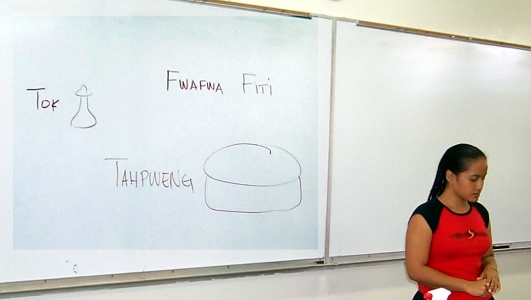
Likiaksa Benjamin, Sepe Shrew, Eimon Charley, Luanne Charley, Yuna Mongkeya, Stacy Nena, Robina Waguk
Sepe Shrew explains fahfah production to the class.

Fahfah fihti [alternate spellings: fwafwa fiti, fwahfwah fiti]. Fahfah: pounded starch involving soft taro and/or banana. Fihti: small balls. Soft taro is baked in an um and then pounded. The pounder should be a first-born son and of respectable standing in the community. The ancient tradition probably connected pounding to particular traditional titles. While a man pounds, his wife or other women in the family will cook coconut milk with sugar until it starts to carmelize. This syrup, called el, will be put on the balls of pounded soft taro. The soft taro is pounded with a special stone pounder called a tok, although today some fahfah is pounded with a wooden tok. The pounding board is called a tahpweng.
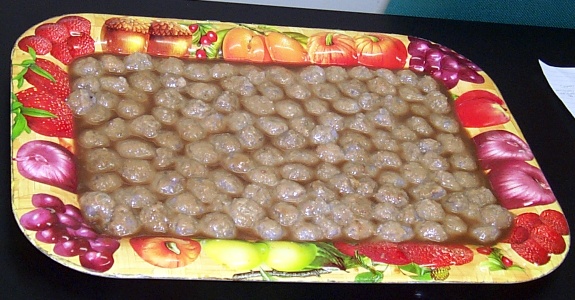
Kimberly Cho', Anastasia Gubung, Alonso Hulofang, Sophia Moon, Valerie Turow
Kimberly explains bu'oy ni im
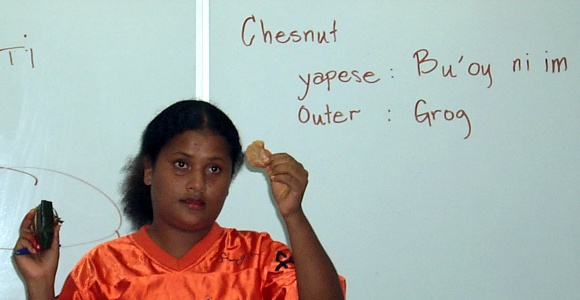
Chestnut (Inocarpus fagifer) is ground and put into a ti (Cordyline fruticosa) leaf with coconut milk. Although the modern bu'ou ni im includes sugar, today's sample has been made the traditional manner. A little water is also added. The leaf is tied with a binding cord. The whole thing is then boiled. Yellow ginger can be added to color the bu'oy ni im yellow.
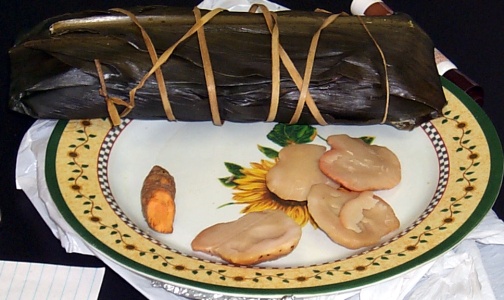
Bu'oy means kidney and refers to the nut, ni im refers to wrapping food stuffs in a leaf for cooking. The bu'oy nut is a local cookie and a local medicine for the teeth.
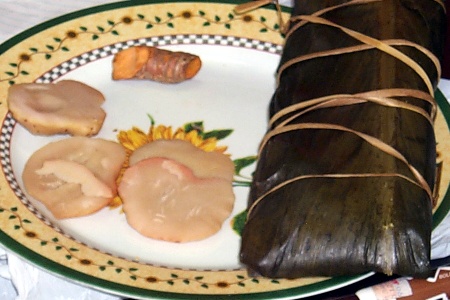
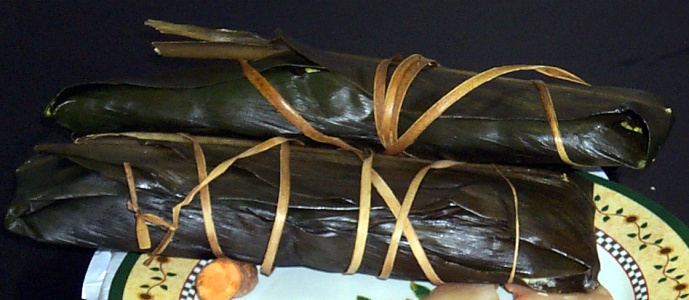
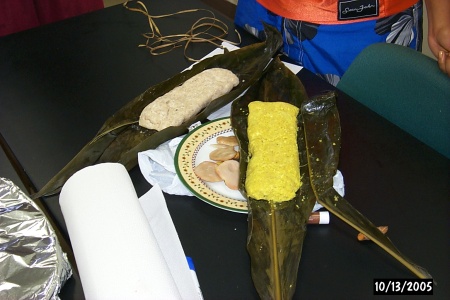
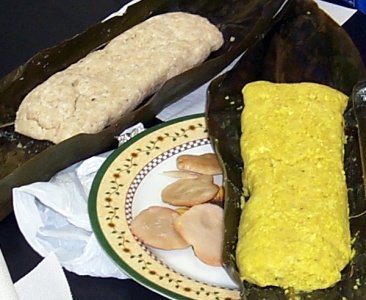
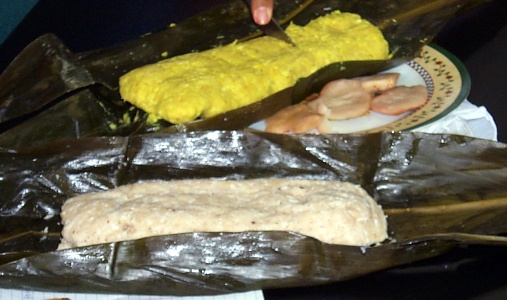
Wayner Elias, Evangeline Frederick, George Ladore, Marlinda Pelep
Yam (kehp) is boiled and then pounded (sukusuk means "wet") and then covered with coconut milk topping (piahia, pronounced "pee-yah-yah").
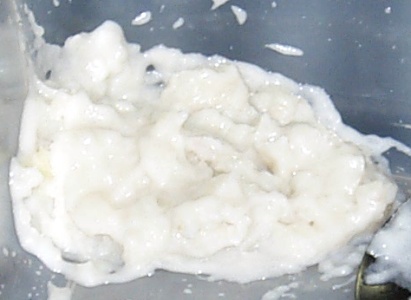
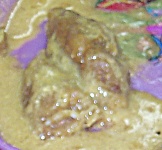 Women dig hard taro (mwehng: giant taro), cut it into pieces, and boil the pieces but not until cooked. The taro is then ground up and mixed with sugar and starch. Coconut sap cooked/melted into molasses or, modern days, sugar, is cooked over a fire until boiling. The taro is then made into the shape of a sea cucumber and dipped or rolled in the molasses/carmelized coconut sap until the sauce gets sticky. Although there are similarities to a local Kosraen/Pohnpeian food called rotuma, the pihlohlo mwehng is of a much smoother consistency.
Women dig hard taro (mwehng: giant taro), cut it into pieces, and boil the pieces but not until cooked. The taro is then ground up and mixed with sugar and starch. Coconut sap cooked/melted into molasses or, modern days, sugar, is cooked over a fire until boiling. The taro is then made into the shape of a sea cucumber and dipped or rolled in the molasses/carmelized coconut sap until the sauce gets sticky. Although there are similarities to a local Kosraen/Pohnpeian food called rotuma, the pihlohlo mwehng is of a much smoother consistency.
Masako Sechaph, Meicy Neth, Ginda Yleizah
Masako Sechaph describes the process for making konen pulo
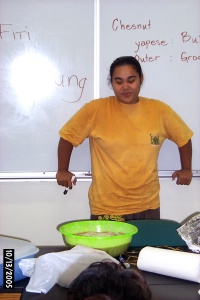
Pounded (hard) taro. Taro must be cooked in a pot tightly sealed with leaves in order to contain the heat and cook the taro. A pounder called a pwo, that looks like a Kosraen pounder noted above, is used to pound the hot taro. After pounding, arung (coconut milk) is put on the taro. This is a two phase process. First the ground copra is squeezed, then water is added and it is squeezed again. The konen pulo is then traditionally served in a large wooden bowl. For home and family informal service, any bowl can be used. Konen pulo is almost always served with fish. Konen pulo simply cannot be served without fish, so the students brought fish as well!
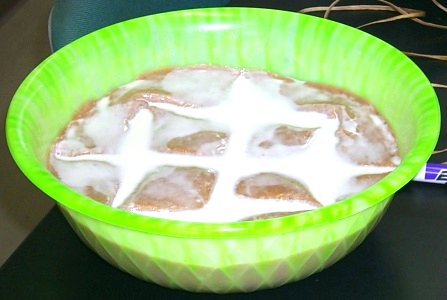
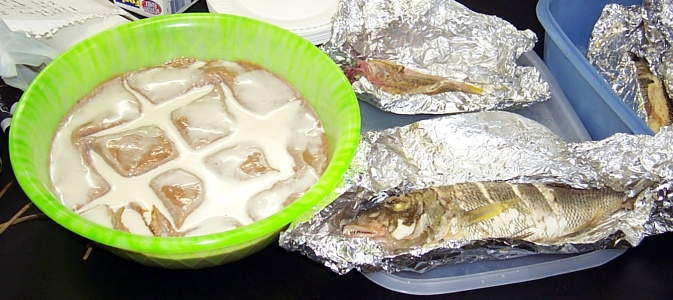
The class was visited by VPCRE Jim Currie and his guest, Dr. Richard Beyer, a prominent food technologist in the Pacific and considered a leader in food preservation in the region. He is now the author of over 15 commissioned reports relating to income generation and food security for the Pacific region. In that capacity he has recently completed a textbook relating to the preservation and processing of root crops, bananas, plantain and breadfruit which was commissioned by the FAO.
Ethnoherb • Ethnobotany • Lee Ling • COMFSM